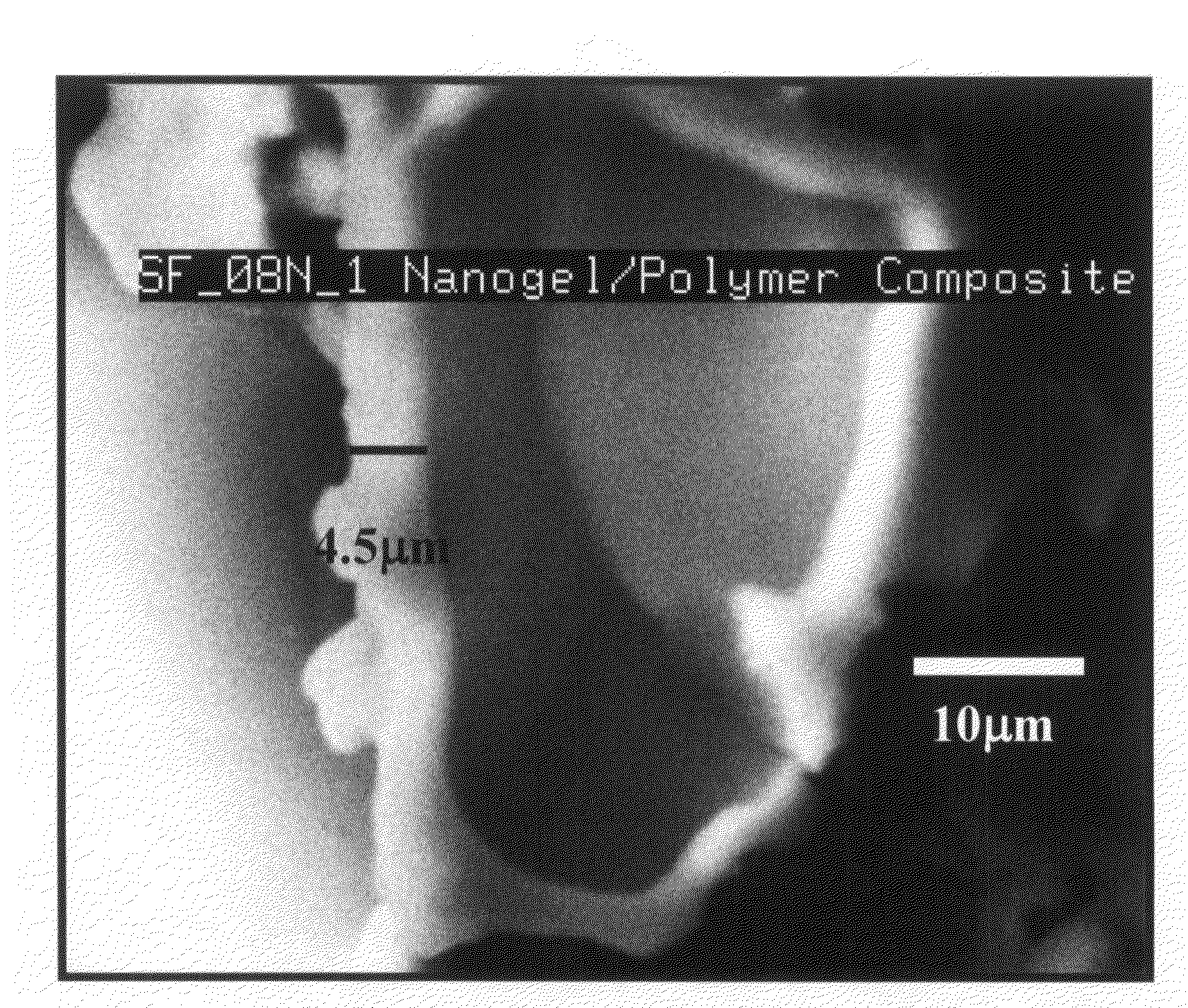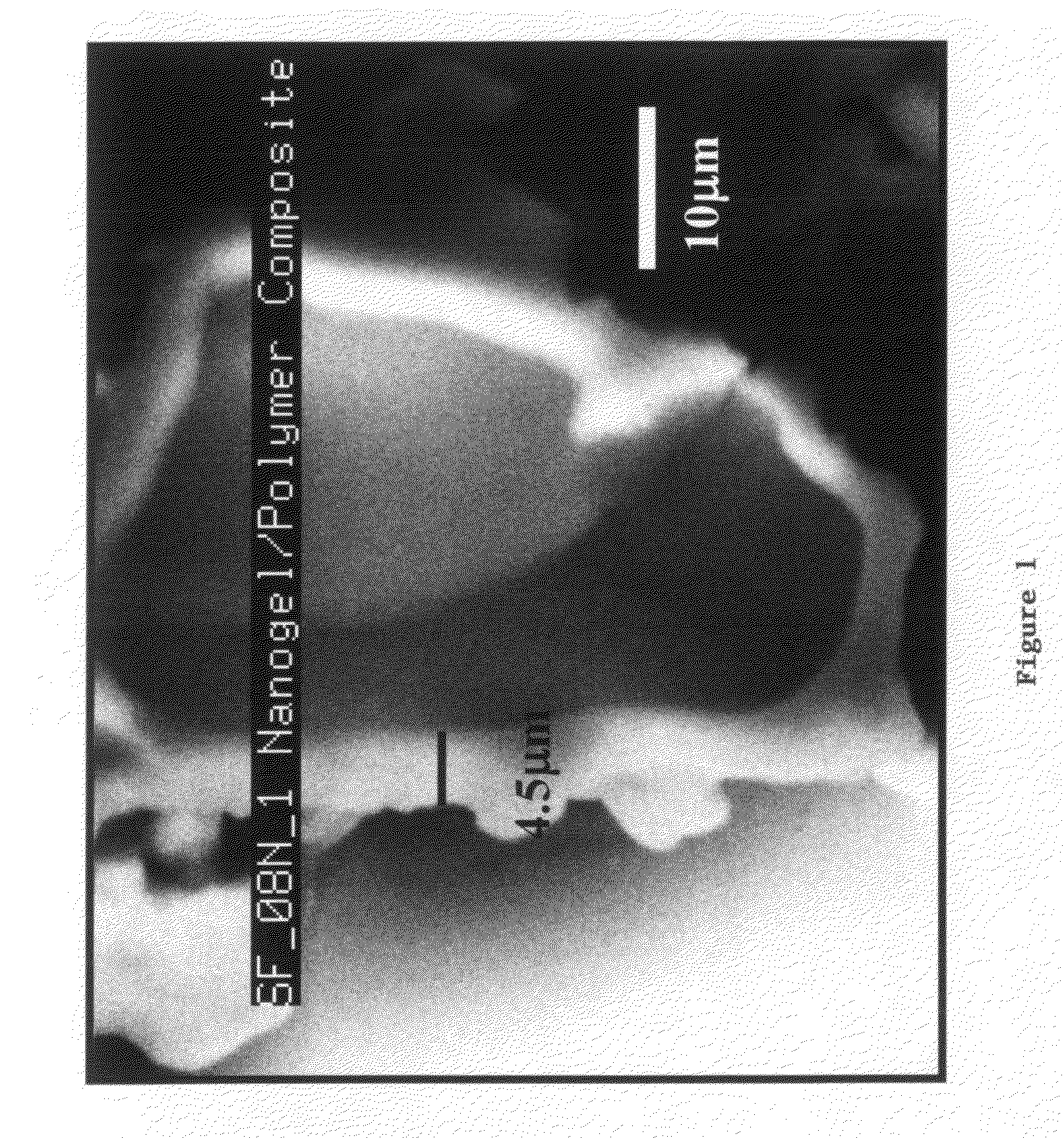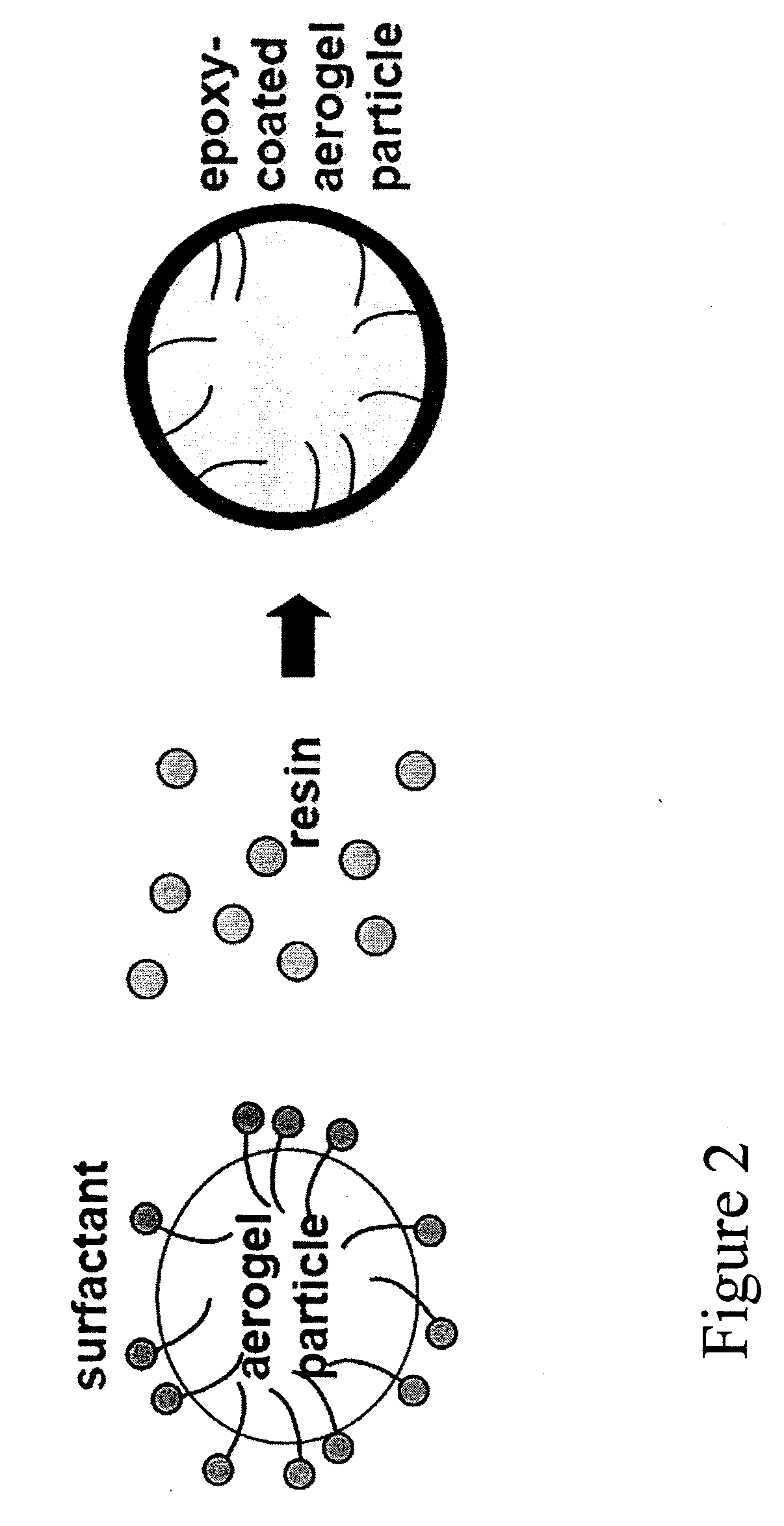Aerogel Based Composites
a composite material and aerogel technology, applied in the field of syntactic foams and composites, can solve the problems of high cost, inability to meet the requirements of foam compression strength, etc., and achieve the effects of reducing density, increasing porosity, and reducing thermal conductivity of aerogels
- Summary
- Abstract
- Description
- Claims
- Application Information
AI Technical Summary
Benefits of technology
Problems solved by technology
Method used
Image
Examples
example 1
[0178]Nanogel® aerogel particles / PVA slurries were prepared by adding 10-micron sized Nanogel® particles (150 g) to 1.5 liters of a solution containing 150 g PVA and 20.5 g Barlox 12i (100% basis). After shaking and stirring, a slurry with a creamy consistency was formed, Laboratory drying of the slurry at 100° C. gave a layered structure, a top chunky layer, rich in PVA, a middle, powdery layer representing the bulk of the material and a bottom layer rich in PVA. Chunks of the top layer floated in isopropanol. The thermogravimetric study indicated that the sample contained 42 wt % Nanogel® particles (i.e., the PVA:Nanogel weight ratio was about 1.4:1). Mixing of the chunks into epoxy at 40 and 50 v % loadings (assuming the chunks had a density of 0.27 g / cc) gave composites that appeared to be pore-free. The epoxy containing 40 v % of the chunks floated in isopropanol. That containing 50 v % chunks was found to have a thermal conductivity of 93 mW / m° K, a value that compares very fa...
example 2
[0179]Nanogel Water Based Epoxy Composite: A water based epoxy emulsion / dispersion was used along with an aqueous curing agent. The epoxy emulsion / dispersion was stabilized using surfactants. The hydrophobicity of the Nanogel particle resisted the ingress of the solution. One pot mixture of water based epoxy (WBE), aqueous curing agent and Nanogel particles was gently stirred. The excess surfactant in the WBE aids in wetting the Nanogel particles and an intimate nanogel-epoxy composite was achieved. Nanogel grades TLD302, TLD101, 08N which were 3.0, 1.0, and 0.08 mm in size respectively were used. The composite was dried overnight followed by curing at 70° C. for 12 hrs and resulted in a light weight composite that exhibited favorable thermal performance.
[0180]Typical compositions used: (i) sample SF—08N: 16 g of EPI REZ 3515, 4 g of EPI KURE 8535, 3 g of Nanogel 08N (ii) sample SF—101: 16 g of EPI REZ 3515, 4 g of EPI KURE 8535, 6 g of Water, 4 g of Nanogel TLD 101. EPI REZ and EPI...
example 3
[0181]Water Based Epoxy Coated Nanogel Particle: Instead of mixing the curing agent in the aqueous mix as in Example 2 above, a surface active curing agent was used to decorate the surface of the Nanogel particles, resulting in a thin coating of epoxy forming on the Nanogel particle.
PUM
| Property | Measurement | Unit |
|---|---|---|
| thickness | aaaaa | aaaaa |
| diameter | aaaaa | aaaaa |
| diameter | aaaaa | aaaaa |
Abstract
Description
Claims
Application Information
 Login to View More
Login to View More - R&D
- Intellectual Property
- Life Sciences
- Materials
- Tech Scout
- Unparalleled Data Quality
- Higher Quality Content
- 60% Fewer Hallucinations
Browse by: Latest US Patents, China's latest patents, Technical Efficacy Thesaurus, Application Domain, Technology Topic, Popular Technical Reports.
© 2025 PatSnap. All rights reserved.Legal|Privacy policy|Modern Slavery Act Transparency Statement|Sitemap|About US| Contact US: help@patsnap.com



